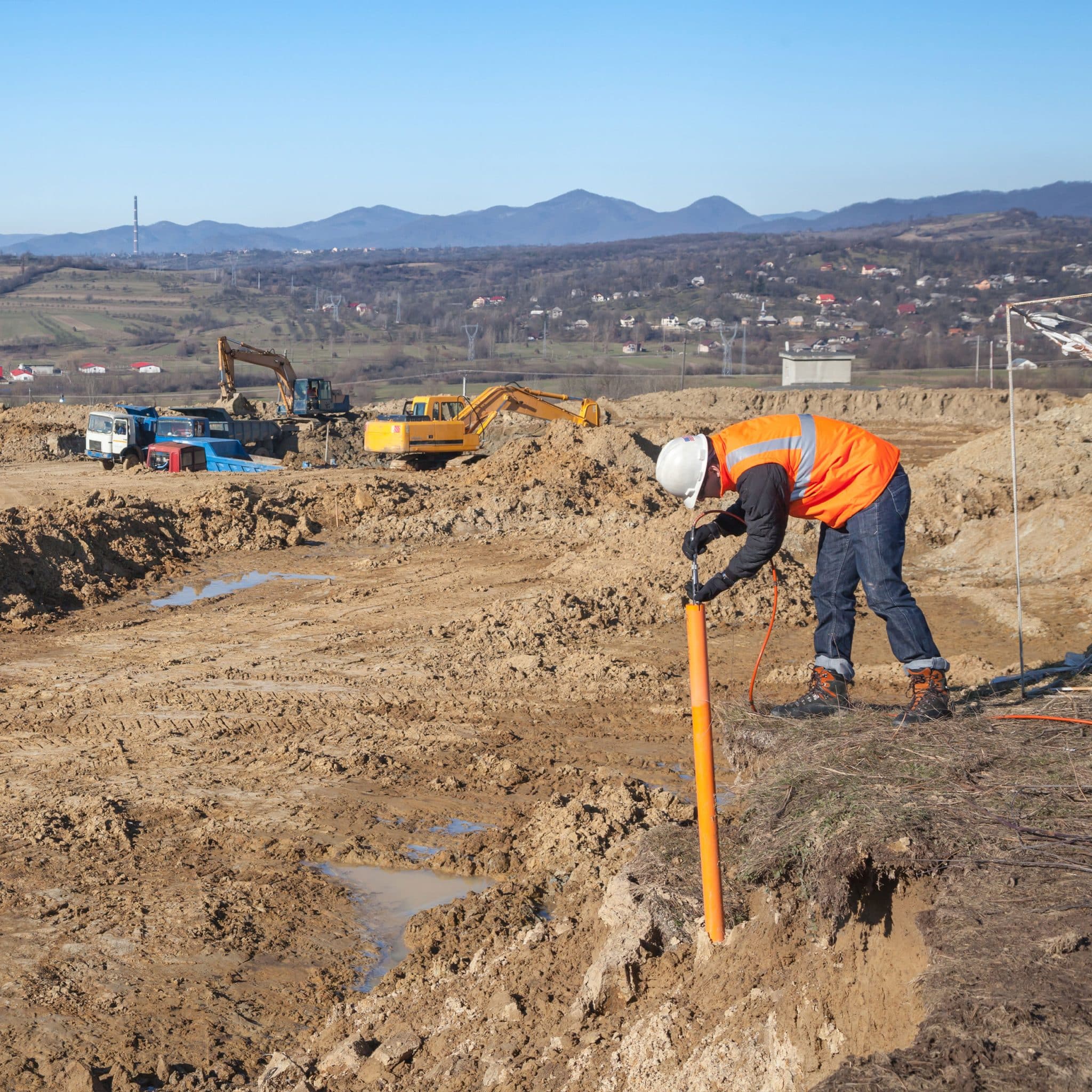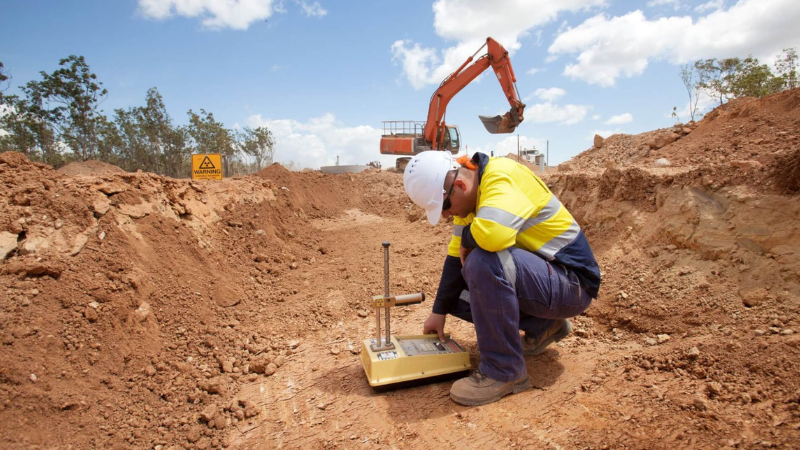The Development of Civil Consulting Engineers in the Modern Period
The Development of Civil Consulting Engineers in the Modern Period
Blog Article
An In-depth Review of the Secret Responsibilities of Geotechnical Engineers in Website Characterization and Ground Enhancement Strategies for Engineering Solutions
Geotechnical designers are important to the effective execution of engineering jobs, charged with the crucial responsibilities of website characterization and the application of ground enhancement techniques. Their work includes a thorough evaluation of subsurface conditions, using numerous testing methods to determine dirt and rock residential or commercial properties.
Function of Geotechnical Engineers
Geotechnical engineers play a pivotal role in the style and building of facilities by analyzing the behavior of soil and rock beneath the surface area - geotech engineer. Their duties incorporate reviewing subsurface problems to educate layout decisions that make sure architectural security and safety and security. By conducting detailed evaluations of soil properties, including shear permeability, strength, and compressibility, geotechnical engineers supply important data that affects the selection of appropriate building and construction materials and strategies
Along with examining soil mechanics, geotechnical engineers are charged with determining prospective threats such as landslides, sinkholes, and ground settlements. Their competence assists mitigate threats related to these geotechnical sensations, thus shielding both the atmosphere and public safety. They also collaborate closely with other design techniques, making sure that geotechnical factors to consider are integrated right into total project style.
In addition, geotechnical designers take part in the assessment of existing structures, supplying recommendations for retrofitting and repair work when necessary. Their extensive understanding of soil-structure interaction is vital for the growth of sustainable infrastructure solutions. Generally, the duty of geotechnical designers is important to the effective awareness of building and construction projects, guaranteeing they are safe, long lasting, and certified with regulative criteria.

Site Characterization Processes
Reliable site characterization procedures are necessary for understanding the subsurface problems that influence task design and execution. Geotechnical engineers use an organized method to gather, examine, and interpret information relating to soil, rock, and groundwater features. This procedure begins with an extensive testimonial of existing literature and archaeological site information, offering insights into previous website problems and potential obstacles.

Data evaluation follows fieldwork, where engineers make use of geostatistical techniques to translate findings and produce geological versions. Through thorough website characterization, geotechnical designers lay the foundation for effective job implementation, lessening unexpected complications and enhancing resource allotment.
Soil and Rock Screening Methods
While comprehending subsurface problems is crucial, the choice of ideal dirt and rock testing methods is similarly vital for exact evaluation and design. Geotechnical engineers utilize a variety of screening techniques to examine the physical and mechanical properties of soil and rock materials.
Research laboratory tests, such as Atterberg restrictions, grain size evaluation, and unconfined compressive stamina examinations, provide crucial data on soil actions under various dampness conditions and filling circumstances. These examinations help figure out dirt category and predict settlement or shear toughness features blog critical for foundation design.
In-situ testing methods, including Standard Infiltration Examinations (SPT), Cone Penetration Tests (CPT), and stress meter tests, enable engineers to gather information directly from the ground. These methods use important understandings into the dirt's thickness, consistency, and stratification without the need for considerable tasting.
Rock testing typically involves core tasting and laboratory evaluation to assess homes like uniaxial go right here compressive stamina and rock quality classification (RQD) Together, these soil and rock screening techniques enable geotechnical engineers to make informed choices concerning site-specific challenges, making certain the safety and security and stability of design services.
Ground Enhancement Methods
Ground renovation techniques are essential for improving the design residential or commercial properties of soil, thereby increasing its load-bearing ability and lowering negotiation. These techniques are critical in dealing with difficulties provided by bothersome or weak dirts, which can substantially affect the security and resilience of frameworks.
Different ground enhancement techniques are utilized, consisting of compaction, grouting, and soil stabilization. Compaction entails enhancing the density of dirt with mechanical methods, which boosts its shear strength and minimizes compressibility. Grouting, on the other hand, entails injecting a fluid material right into the ground to fill spaces and enhance dirt communication. This technique is especially reliable for treating loose sands or fractured rock.
Dirt stablizing encompasses an array of methods, from chemical additives to mechanical therapies, targeted at boosting the soil's resistance to erosion and deformation. Methods such as lime stabilization or cement blending change the residential or commercial properties of the soil at a fragment level, improving its general performance.
Significance of Geotechnical Evaluations
Geotechnical evaluations play an essential function in the preparation and style of engineering projects, as they give necessary information concerning the subsurface conditions. Comprehending soil buildings, rock formations, groundwater levels, and possible geohazards is essential for making certain the stability and safety of structures. These analyses make it possible for engineers to make informed decisions regarding site selection, style parameters, and building techniques.
The relevance of geotechnical evaluations expands past initial project stages; they are important in threat management and cost effectiveness. By determining potential issues early, such as dirt settlement, slope instability, or extreme groundwater, engineers can design appropriate reduction methods, lowering the possibility of costly delays and architectural failures. In addition, these assessments support conformity with regulative demands and enhance the sustainability of design techniques.

Conclusion
To conclude, geotechnical engineers are essential to making certain the security and stability of engineering projects with extensive site characterization and ground renovation strategies. geotechnical industry. Their methodical strategy to examining subsurface conditions, integrated with their recommendations for efficient ground adjustment, substantially enhances soil properties and load-bearing capability. The proficiency of geotechnical designers not only promotes informed job preparation however also guarantees conformity with laws and promotes reliable communication amongst stakeholders, ultimately adding to effective design end results
Geotechnical engineers play a crucial role in the style and building of framework by analyzing the habits of soil and rock under the surface area. By performing in-depth evaluations of dirt properties, consisting of shear toughness, compressibility, and leaks in the structure, geotechnical engineers give vital data that influences the selection of appropriate building and construction products and strategies.
In addition to assessing soil technicians, geotechnical designers are entrusted with recognizing potential threats such as landslides, sinkholes, and ground settlements. Geotechnical engineers use a systematic approach to gather, evaluate, and analyze information concerning dirt, groundwater, and rock characteristics. By identifying potential concerns early, such as dirt settlement, slope instability, or extreme groundwater, designers can create appropriate mitigation i thought about this techniques, lowering the likelihood of architectural failures and costly delays.
Report this page